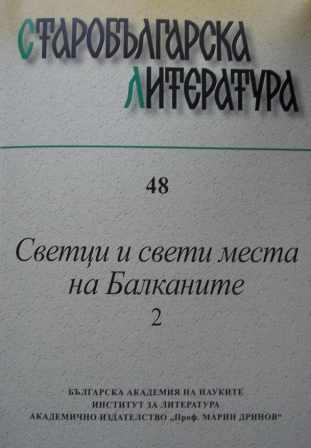Вярата и нейното пространство. Храмът и селищната мрежа през Първото българско царство. Фактори за развитие на свещеното пространство
The Faith and its Space. The Church and the Settel-ment Network in the First Bulgarian Empire. Factors for the Development of Sacred Space
Author(s): Bistra NikolovaSubject(s): History
Published by: Институт за литература - БАН
Summary/Abstract: One of the methods to study the intensity with which Christianity has spread in medieval Bulgaria after the official conversion is to compare the density of the settlements with the number of the Christian buildings located within their parameters. The article focuses on North-eastern Bulgaria in the period between eighth and tenth centuries. The early Byzantine churches, although reduced to ruins, were still perceived as sacred places by pagan Bulgarians, – a fact, supported by the establishment of early Bulgarian Christian cemeteries (necropoles) and churches on these ground (e.g. Abritus). The construction of churches intensified during the ninth and the tenth centuries, mainly in the two capitals, Pliska and Preslav – the political and religious centres of the state. The discrepancy between the density of the settlement network and the number of the church buildings is one of the typical characteristics of this early period. In the course of these two centuries, there were still large medieval settlements and even whole regions with no church building, regardless of the facts, that data extrapolated through other sources shows the presence of a Christian population in them. At the same time, the proximity or remoteness of a settlement from the capital cities appears to be an important factor for erecting a church building. In areas close to Pliska and Preslav, the density of churches was greater, while, apparently, the monasteries had more tangible presence in the countryside. In the ninth and the tenth centuries there were two or three main religious centres in North-eastern Bulgaria: Durostorum and Pliska/ Preslav. Following the roads which connected these main centres, one could detect a higher concentration of churches and monasteries near them. This fact suggests that the road system was a strong factor in establishing and expanding the sacred spaces in the early medieval Bulgaria.
Journal: Старобългарска литература
- Issue Year: 2013
- Issue No: 48
- Page Range: 114-128
- Page Count: 15
- Language: Bulgarian
- Content File-PDF

